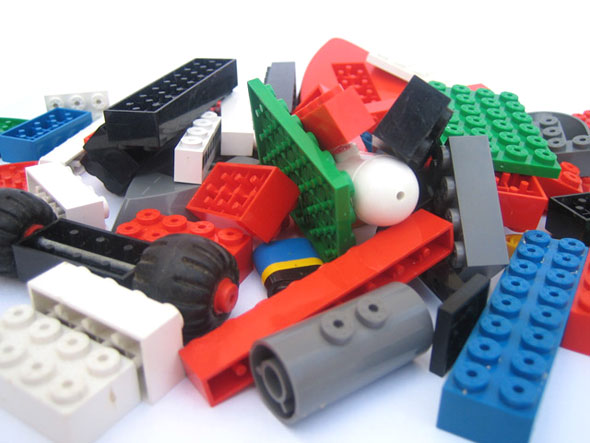Burutapen's insight:
Ever since I decided to become and architect, I have often considered how both the toys and games we are given as children can shape the professional path one chooses. In fact, working at a well known Toy Shop, whilst I was a student, I began to notice the anxiety of people when looking for THE right toy. I guess that rightly so as the more I know about myself, the clearer I see that the toys I played with did influence my future.
Here is how particular games and toys have contributed to my professional self:
Chess:
My father plays chess. He is an international master and he began to play in Moscow, growing up. My grandpa, of course, played chess too... It was a sort of tradition and being the eldest, I too play.
The first chess set i had was a plastic set made out of all the left over pieces that my family had ever owned, and bearing in mind my age at the time (toddler) it was used to practice my aim ... literally.
Soon, however, my mother found a way to keep me off the pans and hobs by sitting me on the kitchen worktop and playing chess with me whilst she cooked. Yes, mom did “play”... or more accurately, she moved the pieces in a credible manner. So much so, that in a competition where she had to stand in for a teammate of dad’s she managed to get half a point by learning a 12 moves strategy by heart. She was so convincingly that when she asked the opponent to have a tie following move number 12, he accepted relieved ... I am not joking.
I haven’t played competitively for years, however the influence of chess, still remains: The strategic thinking (analyzing multiple scenarios/outcomes), the ability to play by memory without having the board in front of me, and to play various games simultaneously have shaped my management style and comes handy every time I need to lead a complex project and avoid conflict.
Construction games:
My first ever construction game was one of those with basic timber shapes (cylinders, cubes, cones, bridges etc) that many children receive as toddlers. It taught me basic lessons regarding centres of gravity, spanning of structures and geometry but it was the second type that allowed me to move beyond gravity.
The second type were plastic brick games such as Exin’s Castles (a construction game to build your own castle) and Tente (the Catalan response to Lego which bricks had further modular considerations and an additional secondary connection method that made it, in my opinion, a more versatile and improved brick than Lego’s).
I used both to make my first attempts to “build” our house but I did not succeed as there was not clear way to build (I learned that cardboard did not mix well with the system). In fact, to my brother’s despair (as all he wanted to build was the little spaceship pictured on the box!... as pictured on the box) and despite Tente’s focus on other than buildings, I kept trying to build complete buildings for a long time. In the process, I learned about modules, enclosing of spaces, openings on walls and brick limitations and opportunities. I remember that specially enjoyed building my first corner with two walls.
The third one was Mecanoo... two types in fact , a metallic one and a plastic one. Mom bought them for my brother, though he was never interested, so I took over the experimenting. The idea of extensive lightweight structures with not very much material made me look at things differently. The more I played, the more I pushed the structures. I could now build my roof! The elegance of the resulting structures gave a lot of thinking to do and I still find frustrating if I am ever told that structures have to be non elegant...
Moulding materials:
Plasticize was my first material... clay came soon after but it required for mom to be present as i was never that tidy and often got carried away.
The best thing about these was that i could build the bricks myself (to any size i wanted), stick them together and create thin sheets to be shaped as roofs. At first, I often made these too thin and as I provided no structural support underneath they kept sagging, but then i mixed them with other materials (twigs for instance) or increased their thickness and (partially) overcame my problems.
When I finished school, I used to tutor students through out the summer on various topics and I have often used these materials in my descriptive geometry teaching. These materials allow your hands to see what your eyes can often miss, and interestingly are great tools for the building of spacial awareness.
Origami:
Last but not least, I would say that origami (though I never knew it was called that when I was a child) was a great tool to push both my creativity and structural logic. To think that something as thin as paper could change its behavior and stand on its own following a sequence of folds fascinated me. Still does.
I think that toys are often overlooked by adults and seen as innocuous, but if you have not work it out by now, I am an architect. Something inside of me “made me do it” and I begin to think that this “something” had been planted and fed for years, and it was growing in the background without anyone noticing... I still remember the shock in everyone’s faces when I announced it.










